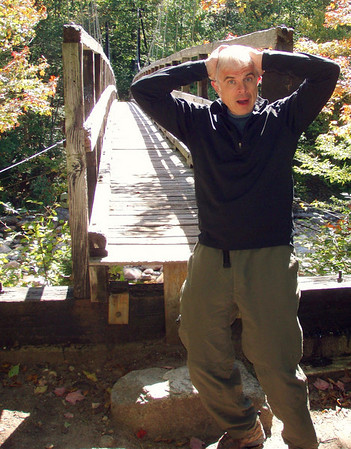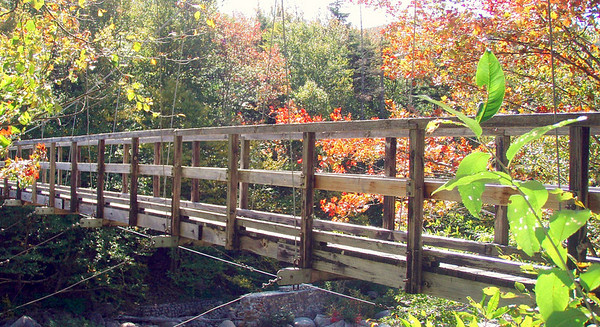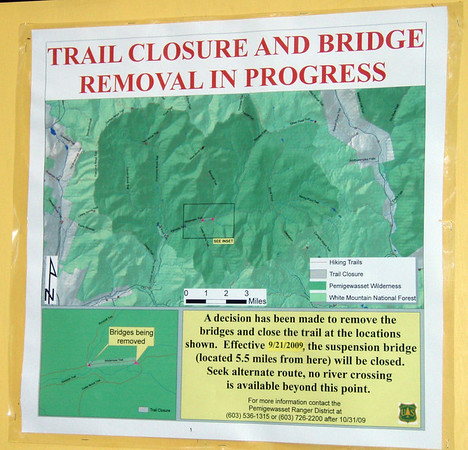Unlike many of you, I think that in this instance, the Forest Service is doing what they're supposed to do and, while many of you may not agree at the moment, they're doing something for our benefit.
The first step to understanding is to discover and recognize the benefits of wildness. In other posts, Laura & Guy Waterman's Wilderness Ethics has been suggested. They in turn, recommend Roderick Nash's Wilderness and the American Mind, among other volumes.
Federal Wilderness, or simply, Wilderness, is an attempt to preserve and even recreate areas of wild land. This means getting rid of somethings that we find convenient or even like. It means that there are somethings that we enjoy doing that will not be allowed in these areas. Because our country has decided that wildness is something worth protecting, it means that money will be spent to do so.
What do we get in return? We get a few protected places where nature is the dominant force, not humans.
The following are some selected quotes from Wilderness Ethics that address some of the concerns that have been raised in this thread.
"What else is wildness? Certain attributes come to mind: remoteness, inaccessibility, uncertainty, mystery. A wild place can be a difficult place, uncomfortable for humans. And we should seek to keep it that way, not try to make it safer, more comfortable, more like the civilization we leave behind." (p. 35)
"[The Pemi Wilderness] and any wilderness gains much of its wild character precisely from being not that readily accessible. It is right that we should have to go the long way around, or undertake the trailless approach, or simply stand and watch and rejoice in its inaccessibility, honor the citadel left free to nature." (p. 100)
"...True wildness certainly does not require large space. It does require commitment to a situation where wild nature is in charge, where tiny humanity is exposed to genuine risk, where the deck is not stacked in our favor but the wild gods of nature hold all the aces." (p. 37)
Some of you have suggested that since the Pemi was thoroughly logged, the notion of calling it wild is laughable. The Waterman's ask the question in such away as to challenge us to do so:
"Can we reverse the civilizing momentum and reclaim a touch of wildness even on land that appeared lost to the development or recreation mania?" (p. 28)
Others have suggest that Wilderness and wildness is an elitist concept. On pages 100 & 101, the Watermans address this issue. They point out that there is an abundance of easily accessible natural wonders, but that it is the number of difficult-to-access places that are in danger of disappearing and are worth protecting.
Later, they address the issue of bridges specifically:
"Crossing swollen mountain streams can provide some of the most hair-raising interludes along the trail. We recall with relish many a precarious crossing--teetering on narrow tree trunks over raging torrents of swift water, or hopping from boulder to moss-slippery boulder, occasionally dropping a boot (or more) into the icy waters. Great memories of exciting moments. Sometimes terrifying. Sometimes hilarious. Always memorable.
"But there are sober, serious bridge builders at work in the backcountry who'd like to exorcise such moments form the backpacker's experience. These overeager engineers will slap a huge log bridge, complete with cement foundations on both sides, over any flowing water too wide to jump. Instead of experiencing an interesting challenge, the hiker just puts his head down and plods over a tailored bridgeway. The mentality that regards such offenses as trail 'improvements' can only be achieved by crossbreeding a beaver with a deskbound colonel from the Army Corps of Engineers.
"We should take lessons from our western hiking brethren. Out West, difficult river crossings are accepted as part of the game. In Alaska they can be really wild. Sometimes you even have to improvise a raft." (pp. 209 & 210)
In regards to this bridge, the Forest Service is following the policies and laws that guide them, which, in this case, seeks to restore and protect what little wildness remains. So I look at this as a step forward. A small step towards the realization of the ideal of wildness. I say bravo and thank you for trying to make life a little more difficult for us in the Pemi Wilderness. I accept that this has and will cost us money.



